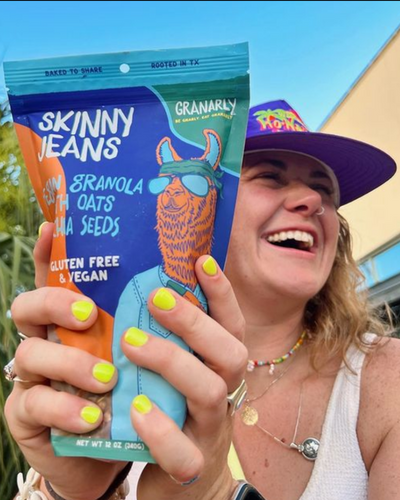The current state of the economy is anything but stable. Inflation, a global pandemic hangover, the war in Ukraine, and other X-factors affect how markets rise and fall. Business owners must find new ways to stay relevant while consumers speculate whether they’ll have jobs this time next year.
Businesses must protect themselves before conditions deteriorate.
Rising costs and slower growth, despite a stronger-than-predicted job market, means planning for future solvency is mission-critical. Brands should look inward and ensure specific mile markers are checked off the list.
1. Conduct a Brand Portfolio Review
Make sure your brand has a well-defined role within your market. Dole out brand-building resources based on this role, not on sales and profits.
Brand portfolio strategy is connected to business strategy, which specifies product-market growth.
- What are your sub-brands?
- Where do they play in the market?
- Can they evolve within the current landscape?
- Does this offering enhance the existing brand?
- What is it about your offering that makes you stand out?
- Can you celebrate specific ingredients or be dedicated to sustainability?
- What’s the hook?
Some brands may be bland and tired. Can you find new partnerships or associations that energize the identity? What roles can play in each product-market context?
2. Determine Which Brands Have Highest Growth Potential
Think about buying behavior: buyer growth is a major metric, but instead of focusing on whether you can outperform rival brands, shift your focus on increasing household penetration.
The world’s leading brands aren’t in a dogfight for who’s got the best burger but instead lead their categories in penetration. It’s about people spending money.
Analyze shoppers yearly. It’s not unusual for most not to buy something the following year – even top brands experience churn.
Companies need to invest to re-earn penetration repeatedly. It’s a game of constant recruitment. Solid brands maintain 25%–30% penetration.
Too many brands limit their users to a narrow subset of product sub-categories. They overestimate competitive positions. Brands must be in it for the long run. Few companies lay plans for longer than 12 months, and many managers who take on a new brand will change SKUs to advertising rather than stay the course.
It takes discipline and patience. A brand can drive up revenue with price hikes but risk losing buyers who can’t afford higher prices. A brand can juice volume by increasing pack size, but it risks alienating occasional buyers—who’d buy a single SKU but not a family pack.
3. Review Brand Positioning & Messaging
Can you anchor the brand in consumers’ long-term memories? Deliver relatable as well as memorable messages?
Consumers have limited information retention so it will take consistency, which means a clear voice and repetition of the same messaging cues.

Winners invest in their hero SKUs to build success. If you’re going to be a premium product, the price and quality must reflect that.
- What are you championing with the product?
- What does that look like if you’re making innovations on the packaging?
- More products in a resealable bag or maybe a new design that speaks closer to the brand’s identity?
All these things lead to brand penetration if the market reacts—whether in-store or online, targeting the SKU is essential, so they’re always available.
4. Define Value
Within 2022 CPG marketing trends, know where your brand stands.
What is your product worth to the base? Customer value isn’t only money, but it’s the solution your product delivers for their needs.
What value does your product provide, other than just the product itself?
Customer value is subjective, but the experience is vital. Innovative companies show a clear path why their value isn’t understated, but can be broken down by market segment as to why the consumer needs this product – despite a CPG recession.
5. Continue Investing
No matter the consumer goods trends, never stop thinking about how to push the brand. Keep investing in the look and feel of the packaging and in how the artwork stands out via click ads or even a YouTube commercial.
Every move matters in a fast-moving and complex market, even with a potential recession looming. This isn’t to say to throw money out the window to solve a problem, but there should always be a growth plan, even if it’s only by 1%.
6. Get Good Bang for Your Buck with High-Quality Packaging
No matter how you move forward in a market like this, getting the best-looking product out there matters. Don’t give consumers a reason to walk away from your granola or spicy seeds.
Instead, captivate them with packaging that’s beautiful yet functional.
Do you champion being eco-friendly? If so, celebrate that by investing in biodegradable or recyclable bags. Why not challenge the big players in the market by creating bold and daring packaging?
Whatever path you take, there are always options to take your packaging to the next level. (We can help.)
7. Capitalize on New Products
If the market is going to shift – and every nuance counts – why not try new sub-products? Why not try testing a new flavor of tortilla chips or even experiment with seasonal options? Everyone likes Christmas or Halloween packaging or unique limited-edition flavors.
There’s no end to how brands can experiment with new ideas that captivate audiences of every type. If the price point is the same for creation, but the packaging is a little different, that’s not a significant risk. And staying market solvent is critical for CPGs moving forward in this market.
We’d love to talk if you’re curious about changing your packaging. ePac has helped brands of every shape, size, and industry redefine what their individual successes look like, one package at a time.


